Tomb Raiders: A National Passtime
Unplanned final destinations, superstition and mysticism in Argentina
Welcome Avatar! Few countries in Latin America can escape the magic realism one usually only reads about in García Márquez’s novels, and Argentina is no exception to that rule. The country has had it’s fair share of bizarre stories of fanatics desecrating the tombs of their idols, or worse. Let’s go over some of the most famous cases.
Eva Duarte’s Last Dance
The former actress turned "flagbearer of the humble", who cultivated similar levels of adoration and hatred among Argentines during her husband's Juan Domingo Perón’s governments, died in 1952 at the age of 33 from cervical cancer.
Her body was embalmed by the Spanish doctor Pedro Ara Sarriá and displayed in the building of the General Confederation of Labor (CGT).
Perón wanted his wife to be embalmed and her remains to rest in the "Monument to the Shirtless Workers (Descamisados)", a pharaonic pantheon that was to be built especially for her.
The doctor kept working on Evita’s body, because in order for her to be preserved throughout many decades, more work was needed.
Military Coup against Perón
Doctor Ara didn’t get more time, when the plans took an unexpected turn in 1955, three years after Evita's death. Perón was overthrown by a military coup during the so-called "Liberating Revolution," which outlawed Peronism for almost two decades.
Perón fled into exile to Spain, but the body of his second wife remained in the CGT building, under the care of doctor Ara.
On November 22, 1955, a commando of the Liberating Revolution broke into the union headquarters and kidnapped her body.
The fear that the Peronists might try to steal the body "and use it as a torch to set the country on fire" led the military to come up with a secret plan: to kidnap the body and make it disappear, giving it a Christian burial.
The de facto president Pedro Eugenio Aramburu entrusted the operation to Lieutenant Colonel Carlos Moori Köenig, head of the Army Intelligence Service (SIE).
Moori Köenig, however, decided to disobey Aramburu’s orders. His men took the body in a common box without identification and tried to hide it in different parts of Buenos Aires.
The rising Peronist resistance tried to keep track of the body as it moved from address to address as best it could, in order to try to recover it.
When Moori Köenig placed the embalmed body in the personal care of Major Eduardo Arandía, the latter hid Evita's drawer in the attic of the house he shared with his wife and his little daughter.
One night, Arandía heard noises in his house and, believing that it was a Peronist commando coming to rescue his standard bearer, he took his 9mm and emptied the magazine on a lump that was moving in darkness: it was his pregnant wife, who fell dead on the spot.
Trip to Italy
When President Aramburu found out that the body was still above ground, he ordered to ship it to Italy, with the help of the Vatican. Evita’s body was Fedex’d to Italy in 1957 under a false name — María Maggi de Magistris — when Correo Argentino needs to work, it works. Her body would remain in a cemetery in Milano for almost 15 years.
In order to stop raising suspicion, someone was even paid to lay flowers at the tomb every couple of weeks.
The fate of the remains of the popular Evita was a mystery to Argentines until 1970. That year, a group of Montoneros kidnapped and murdered former president Aramburu, accusing him among other things, of disappearing Eva’s body.
The new military president Lanusse had Eva’s body exhumed at the end of 1971 in an act of “good faith” and it was sent to Perón's residence in Madrid. Perón returned to Argentina in 1973 after his long exile with his new wife Isabel, but without Evita’s body.
The Aramburu for Evita Swap
What finally caused Eva Perón's embalmed body to return to Argentina was the theft of another corpse: that of the man who had ordered her kidnapping, Aramburu.
The Montoneros guerrilla group who was also responsible for his death decided to steal his body from the Recoleta cemetery, and demanded the new government of Isabel Perón (who was in charge after her husband had just died), to bring Eva’s corpse to Argentina.
This finally happened in 1974, when her body was mummified, restored and exhibited together with that of her husband (who had a closed casket).
The Hands of Juan Domingo Perón
Perón and Evita were not buried together — the idea of creating a great mausoleum never went anywhere because Perón’s second wife who remained in government since she was the Vice President, suffered a coup d’etat and was exiled back to Spain.
The new Military Junta under Videla had no intentions of creating a shrine to Peronism, and decided to give Eva’s remains to her family’s tomb (Duarte) at the Recoleta cemetery, while Perón was buried in Chacarita cemetery.
Autist note: you can read more about Chacarita cemetery here, not as popular as the Recoleta cemetery, but definitely more impressive:
The old general and founding father of Peronism laid there quietly until 1987, four years into Argentina’s recently regained democracy.
As usual, the economy was in dire straits, and the government of Raúl Alfonsín had just overcome a first uprising of the carapintada officers who opposed the trials for crimes against humanity committed during the dictatorship (threatening with another coup d’etat).
The economy was hyperinflating despite the Austral plan, and it was in this context that Perón’s tomb at Chacarita was desecrated: tomb raiders opened the coffin, removed the corpse's hands, stole a saber, a cap, a flag, and a poem.
Many years have passed since that event, an enigma that not only remains shrouded in mystery but was enhanced by a series of strange deaths, all of people who, in one way or another, could provide clues to solve it.
As we have seen before in Icarus: the Carlos Menem Jr. helicopter crash, if certain people do not want the truth to come out, they will make sure to take out anyone who could provide any answers.
The investigation into Perón’s tomb desecration was made up of trace specialists from the Federal Police and forensic experts. They found that the body was missing its hands, possibly cut off with a surgical saw.
In addition to the missing hands, another missing object would soon acquire singular importance: a poem written by Perón's widow, María Estela Martínez (Isabel), which had been framed and deposited next to the body.
Autist note: Isabel Perón is still alive at 92 years old, currently living in Spain. She has always denied to speak to reporters about her time as president and subsequent exile from Argentina. A judge in Mendoza, Argentina in November 2006 demanded testimony from Isabel Perón, along with other Peronist ministers of her government, in a case involving forced disappearances during her presidency and for crimes related to her issuance of 6 October 1975 decree calling the Armed Forces to "annihilate subversive elements." Spain's National Court ruled twice that the charges against her did not constitute crimes against humanity, adding that the statute of limitations on the charges expired after 20 years. In 2017, the Supreme Court of Justice of Argentina unanimously dismissed petitions to interrogate Isabel Perón either as a witness or as a defendant.
Two letters were set out accompanied by the two parts of Isabel's poem, to the president of the Peronist party and another to the CGT (General Confederation of Labor). The letters demanded eight million dollars in exchange for the return of Perón's hands, cap, and saber.
The desecrators never showed any signs of life again after those two letters.
Why the hands?
The lack of insistence on the ransom demand for the hands ruled out an extortionate motivation, but not the economic motives of the desecration.
According to this hypothesis, one of the key elements was a ring on Perón's hands, which held a hidden key. That key supposedly gave access to a Swiss bank account where the general would have kept a fortune.
Requests for judicial reports, through the Argentine embassy in Geneva, obtained the response that there were no accounts in the country's banks related to the former Argentine president.
The second hypothesis was a bit more gruesome: the thieves needed the hands to open a special type of safe that instead of being controlled with a key or combination lock, is powered by what is known as a key reader or the hand geometry. This type of safe emits a flash of incandescent light that measures the shape of any hand that attempts to open it. These safes are programmed to open only after scanning the hands of their owners.
Deaths related to Perón’s hands
Now we arrive at the Scorcese montage of people involved in the case and their final destinations. Besides officials and a judge, the chain of deaths related to the case also includes two witnesses.
Paulino Lavagna, one of the witnesses and caretaker at the La Chacarita Cemetery, had reported several times that they wanted to kill him. He died a few months after the desecration on the cemetery grounds, while he was working. The death certificate, which stated that he had died from “a non-traumatic cardiorespiratory arrest,” did not convince Judge Far Suau, who had ordered an autopsy. The expert determined that he had been beaten to death.
María del Carmen Melo, a woman who continually brought flowers to Perón's grave, was also beaten to death. Shortly before she was murdered she had contacted the court saying that she could give a description of a suspect who had been circling Perón’s tomb in the days prior to the robbery of the ex-president’s hands.
Neither of those two deaths were ever cleared up.
In February, the head of the Federal Police Juan Ángel Pirker (one of the people who knew the most about the case), died in his office, presumably from an asthma attack.
The first judge in the case, Jaime Far Suau, died in November 1989 along with his wife in an alleged car accident on Route 3, near Coronel Dorrego. His car overturned on a straight stretch, without any element being found to justify the accident. Inexplicably, the investigation into the case did not order an autopsy.

Shortly after his death, the black folder where the magistrate kept the transcript of his interview with Isabel Perón and important documentation related to the case disappeared from the courthouse, never to return.
The police chief of the investigation, Commissioner Carlos Zunino, had better luck. He survived after being shot in the head in an attack whose perpetrators were never found.
Empty Handed
After the death of Judge Far Suau, the investigation stalled. None of the judges who substituted him had any breaks in the case, which ended up being archived.
In September 1994, a judge reopened the case and focused on the hypothesis that the theft from Perón's hands was related to a political destabilization manoeuvre, reinforced by the discovery of duplicates of the keys in the Police Station 29.
With this new information, it was speculated that the perpetrators of the desecration had opened the coffin with them to cut off the former president's hands and that the hole in the armored glass and other clues they left in the vault had, in reality, been manoeuvres to divert the investigation.
Up to this day Perón’s body remains empty handed, and the mystery unsolved.
Club Racing: Seven Dead Cats
Racing Club, a soccer club close to Péron’s heart — it’s stadium is even called Estadio Presidente Perón, also known as El Cilindro—, also fell victim to a burial story that would haunt its pitch for 35 years straight. Racing fans would suffer the unlikely consequences of a curse that began in 1967.
The world of sports is full of paranormal events that someone has created to justify mistakes or bad performances, but the Racing story is on another level.
Racing, which had emerged victorious from the Libertadores, would win the Intercontinental against Celtic, who had just made history by lifting the European Cup. After a double round-trip confrontation, the title was decided in what is known as the Battle of Montevideo, which the Argentines won 1-0.
This is how Racing became the first team in the country to win the prestigious intercontinental trophy. Everyone was happy in Avellaneda, Racing’s home base, except the fans of Club Atlético Independiente.
Independiente fans could not bear that their neighbors and eternal rivals won a title that they had lost consecutively in 1964 and 1965.
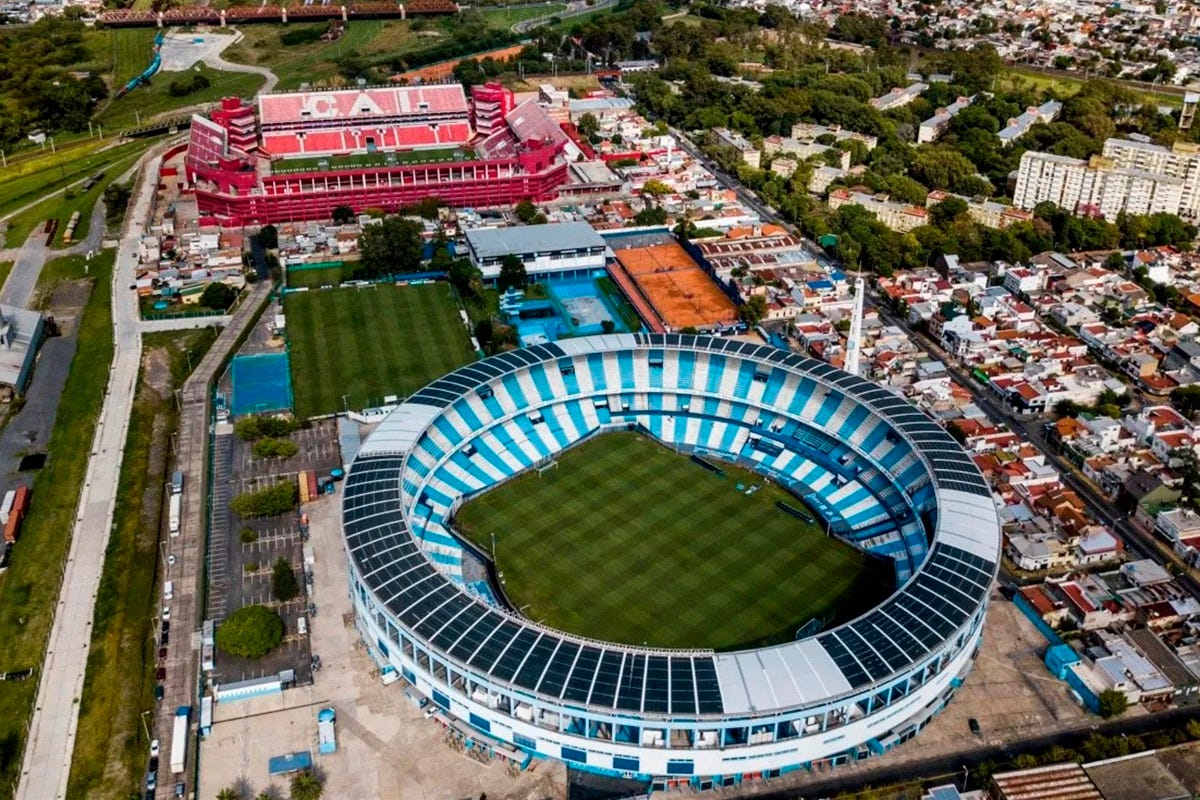
In order to right this wrong, a group of angry Independiente fans decided to make sure that their team was not going to suffer further humiliations. And so one night, they left the Libertadores de América stadium armed with a witch and seven dead cats, and sneaked onto the pitch of the Racing stadium.
Once they entered, they buried the dead cats across the pitch, with the idea that this would bring 50 years of bad luck to Racing — the math checked out, roughly 7 years of bad luck per cat.
When Racing learned about the incident, they thought it was some nonsense invented by the self-conscious Independiente fans, who no longer knew what to do to dethrone them. They would soon change their minds.
For starters, Racing lost the league on the last day after being beaten 4-0 by its eternal rival and neighbor Independiente, home of the dead cat buriers. They lost the top positions in the years after and never won the championship again.
The story of the seven cats began to become an increasingly hot topic. In 1983 the curse of the dead cats became as much as a proven fact: Racing, which hadn’t won a single title in 16 years, lost against Independiente at their home base and was relegated to the Primera B league.
After that tragedy, Racing got to work to put an end to the evil spell that tormented the club. The coach ordered the grass to be lifted in search of the corpses of the seven cats. Unfortunately the legend goes that they found only six, so the curse was not yet lifted.
In order to lift the curse, a sorcerer from Avellaneda stated that toads had to be buried on the pitch, which they did. The sorcerer turned out to be wrong, and the toads only aggrevated the feline curse.
Finally, in 1998, Racing decided to carry out an exorcism mass on the grass of the Presidente Perón Stadium. The priest sprinkled holy water on every corner of the field and renewed the hopes of its desperate fans.
After this, in 2001, Racing won the league again after 35 years of zero successes. The spell was finally lifted.
No Sleep For Diego
Another myth who put his hands to good use was Diego Maradona, the star soccer player who brought home the second World Cup title for Argentina in 1986. Just so you have an idea, Maradona is on a similar level of mysticism as Perón and Eva for most Argentines, and less politized of a figure (even though he himself was a die-hard Peronist).
Except for parties and dubious female visitors at the presidential residence during the Alberto Fernández 2020-2022 lockdown, the majority of the Argentine population was confined to their homes at the end of 2020.
When Diego Maradona passed away on November 25, 2020, no one could stop Argentines from paying their final respects to the soccer hero, despite the fact that the country was still under a very strict lockdown.

The chapel with the remains of Diego Armando Maradona was opened to the public at the Casa Rosada, with the presence of thousands of people who wanted to say their final goodbyes.
Some people, like the funeral workers that were tasked with prepping don Diego’s body, yearned for a more personal goodbye.
In a viral coffin selfie with Maradona’s body, funeral worker Molina is seen leaning over Maradona's body, looking at the camera, with a thumbs up while he touches the former soccer player's forehead with his right hand.
Claudio Fernández, the funeral worker fired over the incident, said the decision to take the photo was impulsive and he regrets it. Fernandez was snapped with his son, who made a thumbs-up signal, and another man.
All that happened before Diego was even able to find his final resting place, and we found out that there was more in store: in a TV interview, his doctor revealed that Maradona is “buried without his heart”:
“There was a group of barras bravas (hooligans) from Gimnasia (soccer club) that planned to break in and extract Diego’s heart. That did not come to fruition because it was too much audacity.
We were aware that this was going to happen, so his heart was extracted, also to study it because his heart was very important in determining the cause of Maradona's death. This is why he is buried without his heart.”
Diego’s story is yet another one that proves that famous bodies can’t ever fully rest at peace in Argentina.
Final RIP Thoughts
It’s pretty clear from just these examples, that you would be hard pressed to find another place with more macabre relationship with former idols, together with an unhealthy but entertaining dose of superstition in the case of the dead cats buried on the Racing field.
So if you do plan to move to Argentina permanently and make the Chacarita cemetery your final resting place, make sure your tomb is shut tight.
See you in the Jungle, anon!


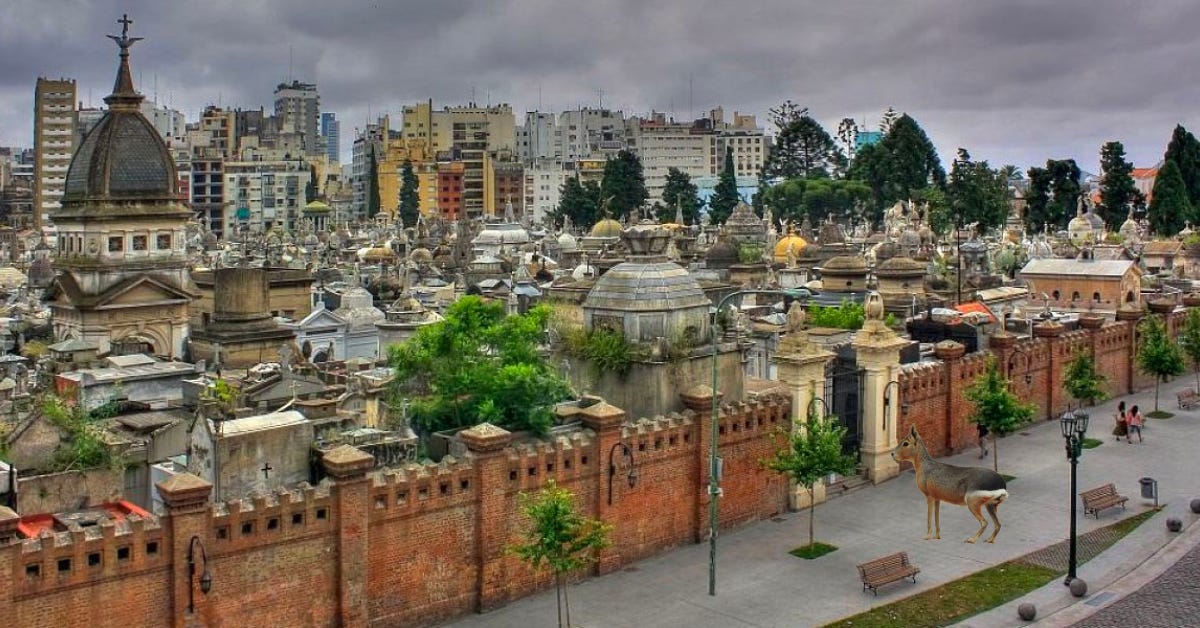

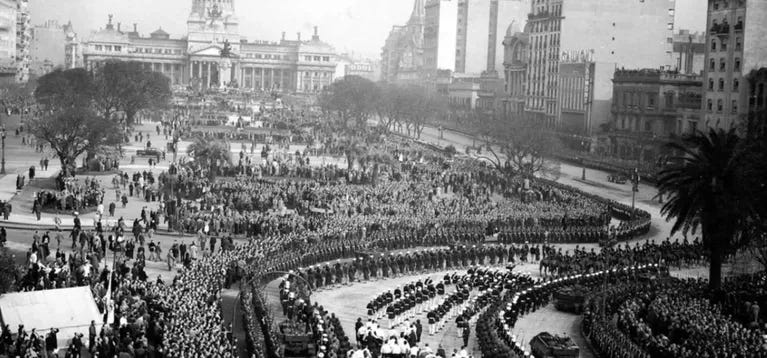
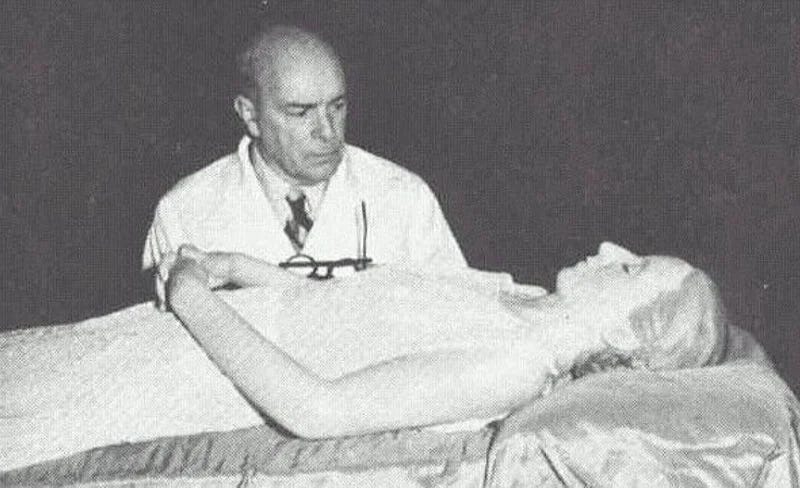
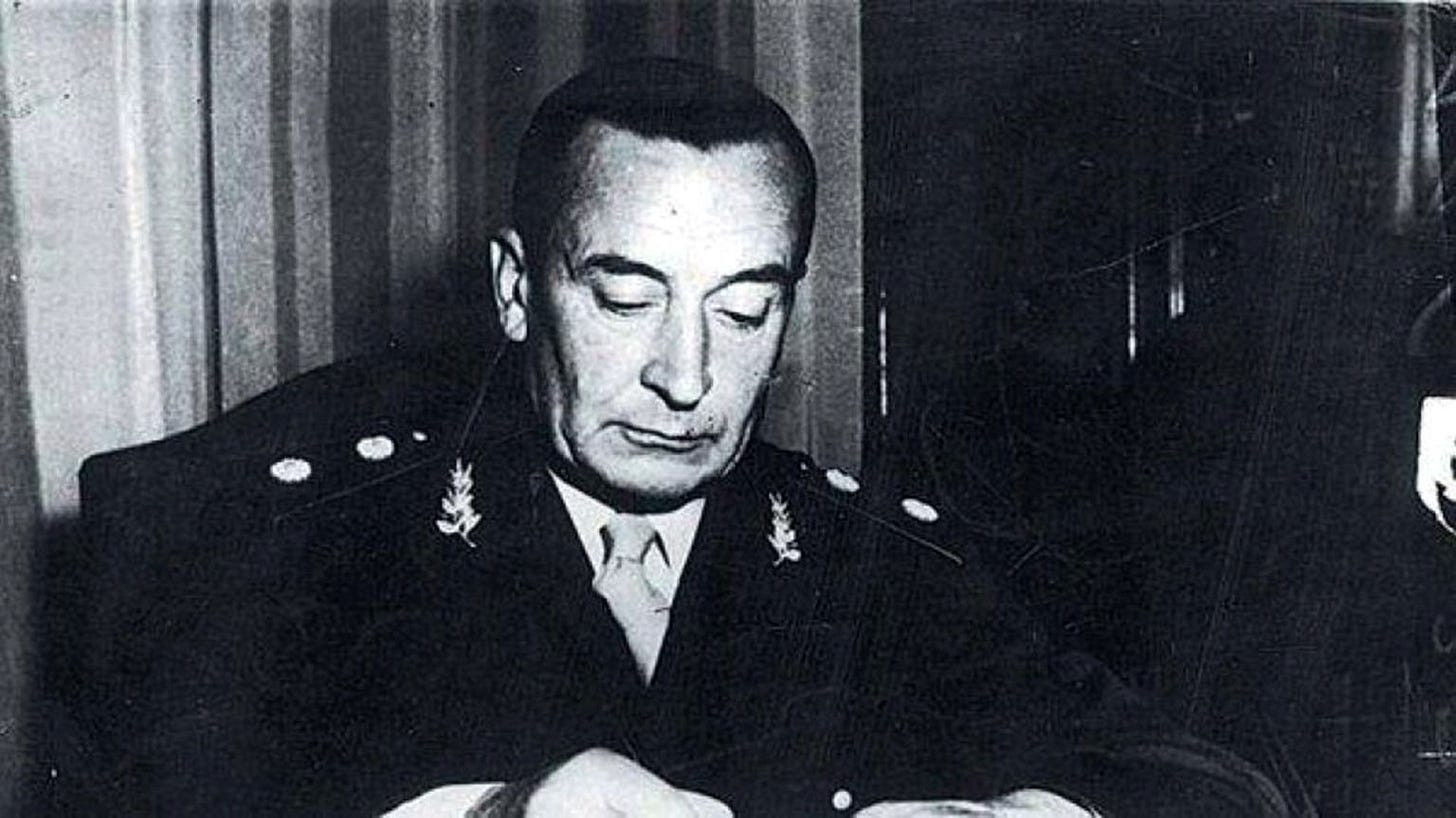



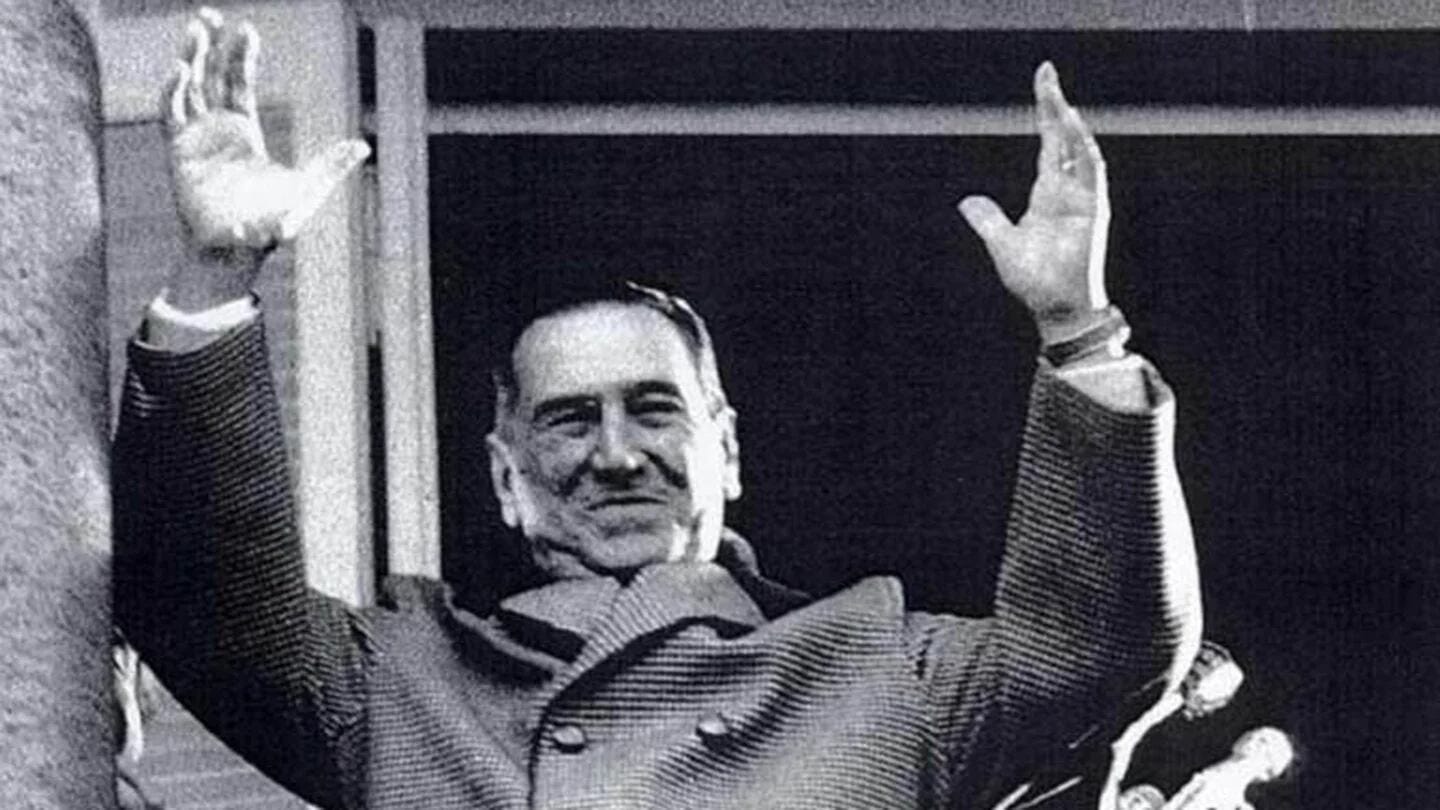





I'm surprised Eva Duarte is not used as the poster child to sell Gardasil.
Fascinating subject, and absolutely excellently written (I snorted with laughter more than once '"armed with a witch and seven dead cats", indeed! 🤣🤣).
Thank you. I look forward to learning more from your writing (certainly beats reading dry history books!) when I have the occasional space between tango classes and milongas...